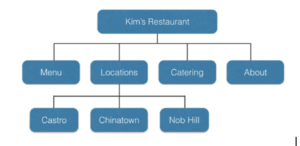Harnessing the Power of Blog Posts for Enhanced SEO Results
Does blogging help with SEO? The answer is a resounding yes. Blogging brings in more traffic and can help build brand awareness and authority. Here’s how to optimize and excel in this powerful marketing sector.
In the vast universe of digital marketing, search engine optimization (SEO) is a term that carries significant weight. But why is SEO so crucial? It enhances the visibility of your website and its various elements, including blog posts, making it easier for prospective customers to discover your product or service through search engines like Google through the power of blog writing.
However, the mere existence of a blog doesn’t guarantee improved SEO. It requires strategic planning and execution. Here, we share three simple yet powerful ways a blog can boost your website’s organic visibility, traffic, and results. Here’s what you need to know.
Tailoring Each Post to a Specific Audience
The journey to a successful blog post begins with the end in mind – the audience. As you draft each post, consider specific questions your potential customers may have. This allows you to craft content tailored to particular customer segments, incorporating targeted keywords that address distinct needs and solutions.
Consider, for example, if you’re a skincare brand. Potential blog topics could be answering questions your customers frequently ask, such as the benefits and uses of your skincare products. Crafting titles like “What is retinol and why should I use it” or “Understanding Retinol: The Miracle Ingredient for Youthful Skin” directly address customer queries, enhancing your credibility and, ultimately, your SEO results.
Incorporating Up-to-date Data
Search engines like Google have advanced algorithms that detect when data or references in your content are outdated, which can negatively affect your SEO. By including recent, relevant data and linking to credible, updated sources, you offer valuable information to your readers and signal to search engines that your content is fresh and reliable.
These links act as a nod to other sites’ helpful, related content, simultaneously suggesting a thematic connection with your content. Over time, this practice cultivates trust and appreciation among your audience, reflected in improved engagement metrics like increased time on site and lower bounce rates.
Sharing Your Blog Posts on Social Media
Social media sharing, though sometimes underestimated, is essential to maximizing your blog’s impact. Promoting your posts on various social platforms can boost your blog’s engagement and traffic while growing your social following.
Benefits include:
- Keeping your social media pages current and engaging.
- Maintaining audience engagement.
- Enhancing SEO results through social signals, as these are included in ranking algorithms.
- Increasing referral traffic through social links.
Incorporating targeted keywords in your social media posts can improve rankings, so pay attention to this critical detail.
Working with Onimod Global
At Onimod Global, we offer comprehensive SEO services that encompass everything from strategizing with the latest innovative marketing techniques, content creation and optimization, to robust link-building. We understand the integral relationship between social media and SEO, guiding you on how to best leverage your blog posts across platforms to increase visibility and engagement.
To ensure you’re making data-driven decisions, we provide regular analytics reports and stay on top of ever-evolving SEO updates to keep your blog’s SEO tactics up-to-date and effective. Our goal is to transform your blog into a powerful tool for driving visibility, traffic, and overall digital marketing success. For a full list of our offerings, see here.
Wrapping Up
SEO is essential to any successful digital marketing strategy, and blog posts are crucial. Businesses can optimize their visibility and drive traffic to their site through targeted, data-driven posts shared across social platforms. At Onimod Global, our work spans the SEO landscape, social media advertising, and digital marketing.
If you have questions about leveraging SEO or want to learn more about our services, don’t hesitate to contact us today. At Onimod Global, we’re committed to enhancing your marketing strategy and driving your business toward success. Contact us here today.


